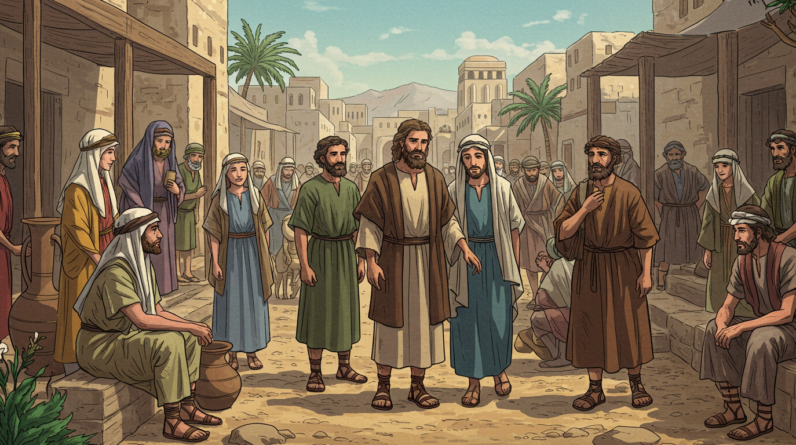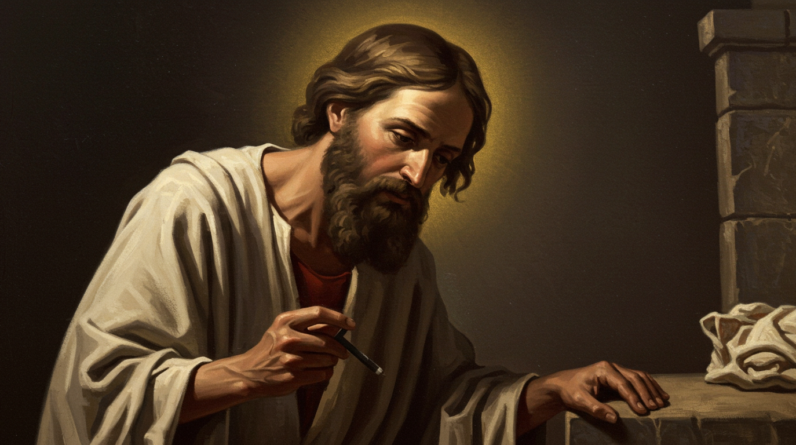Explore the overlooked life of James, Jesus’ brother, and his transformative journey from skepticism to leadership in early Christianity. Uncover lessons on faith today.
James – A Key Figure in Jesus’ Life
Have you ever thought about what it would be like to grow up alongside someone who is destined to change the world? Imagine being in the shadow of someone whose life mission is so paramount that it’s been talked about for centuries. Today, we’re diving into the life of James, a pivotal figure in Jesus’ story—his very own brother. James, often overlooked, has a rich narrative interwoven with themes of faith, loyalty, and transformation.
His presence in Jesus’ life was both complex and significant, contributing to the tapestry of tales that define early Christianity. As we explore the layers of James’ character and life, you’ll find remarkable lessons that may resonate with your faith journey. So, let’s uncover who James was, his role in Jesus’ life, and the teachings he leaves with us today.

Biblical Background and Mentions
James, often identified as the brother of Jesus, emerges in multiple passages throughout the New Testament. He’s explicitly mentioned alongside Jesus in Matthew 13:55, where townspeople question Jesus’ teachings by asking, “Isn’t this the carpenter’s son? Isn’t his mother’s name Mary, and aren’t his brothers James, Joseph, Simon, and Judas?” This reference establishes his familial ties, paving the way for understanding his unique position.
In the book of Acts, James’ prominence grows as a leader in the early church. Notably, he presides over the Jerusalem Council to address disputes regarding the integration of Gentile converts (Acts 15). Paul’s letters also shed light on James, describing him as “one of the pillars of the church” (Galatians 2:9). Each mention frames James as more than just Jesus’ brother, but as a steadfast leader pivotal to the spread of Christianity.
Historical and Cultural Context
In first-century Jewish society, family ties were integral to social and religious identity. For James, being Jesus’ brother meant challenging societal norms and familial obligations. Jewish traditions emphasized honor and loyalty to family, highlighting the significance of Jesus’ relatives within the broader community. However, the societal dynamics treated Jesus’ revolutionary teachings with skepticism, which likely placed pressure on James and his family.
James navigated these expectations, living in a time of religious upheaval. Jewish traditions were deeply rooted, yet here was James, at the heart of a movement that sought to redefine spirituality. To maintain faithfulness both to his family and emerging Christian doctrine was no small feat. The familial connection in this cultural setting becomes even more compelling considering James’ eventual leadership role, bridging his Jewish upbringing with the nascent Christian faith.
Their Relationship with Jesus
James’ relationship with Jesus transitioned from skepticism to leadership—a testament to the profound impact of Jesus’ resurrection on him. Initially, the Gospels hint at a somewhat strained relationship; Jesus’ radical claims and teachings left his family, including James, bewildered (Mark 3:21). This dynamic shifted dramatically following Jesus’ resurrection, with James becoming a devout believer.
Personal moments between them are less documented but no less significant. The post-resurrection appearance of Jesus specifically to James (1 Corinthians 15:7) marks a pivotal transformation, turning initial doubt into unshakeable faith. James’ eventual role as a leading figure within the early church shows the profound influence Jesus had on him, inspiring a lifetime commitment to the Christian cause.
Lessons We Can Learn
James’ story offers rich lessons on the complexity of faith and transformation. His journey reminds us that initial doubt doesn’t preclude eventual faithfulness; in fact, it can make one’s faith even more resilient. James’ leadership within the early church exemplifies servant-leadership—he served not by exerting power but by guiding with humility and wisdom.
In today’s Christian life, we can draw from James’ life the resolve to remain steadfast in our beliefs amidst uncertainty. His life reminds us of the power of personal transformation, encouraging none to lose hope when understanding feels cloudy or distant from faith looms. It inspires Christians to reflect on their roles within their communities, promoting unity and genuine care beyond personal ambitions.
Common Misconceptions and Clarifications
James’ identity is often entangled with misconceptions, sometimes conflated with other biblical figures. One common misunderstanding is equating James, Jesus’ brother, with James the Apostle, son of Zebedee. The two are distinct, with separate paths within Christ’s narrative. While both served crucial roles, James, the brother of Jesus, was particularly pivotal in the church of Jerusalem.
Another misconception is dismissing James as merely a skeptic turned believer due to Jesus’ blood relation. Rather, his leadership in the early church highlights that his faith extended beyond family ties—rooted in experiencing the transformative power of Jesus’ teachings and resurrection. Clarifying these points enriches our understanding of his multifaceted nature.
Conclusion
James belongs to the heart of Jesus’ historical and spiritual journey—a true testament to personal transformation. Though initially a skeptic, his life evolved into one of unwavering faith and leadership, shaping the foundational church era. Exploring James’ story invites reflection on our journeys, prompting questions such as, “How can James’ transformation inspire me to deepen my faith?”
As we part from this exploration, consider the profound courage James exemplified, inspiring us all to pursue growth through faith. Let us carry forth his legacy, contributing positively to our community and fostering the spiritual path we’re called to traverse.
Acknowledgment: All Bible verses referenced in this article were accessed via Bible Gateway (or Bible Hub).







